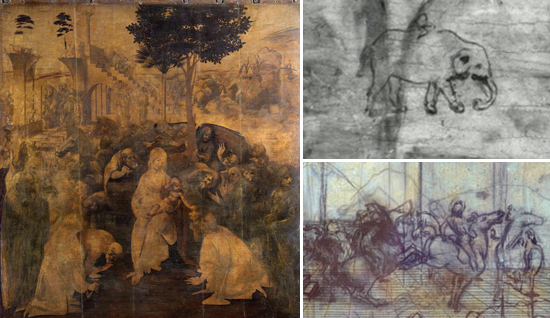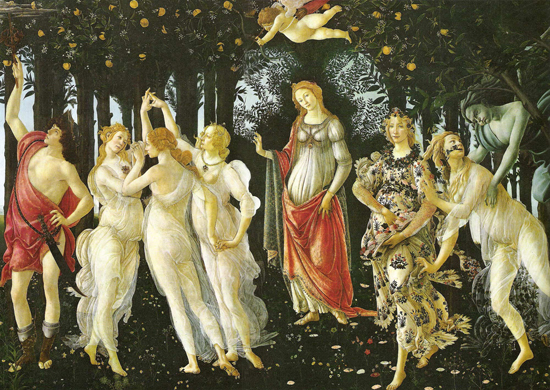[ted id=1588 width=560 height=315]
How, exactly, does a Leonardo da Vinci mural believed to be three times the width of The Last Supper get lost? This is a mystery that Maurizio Seracini has been trying to solve since 1975.
After graduating with a degree in engineering from the University of California San Diego, Seracini was approached about a project in his hometown of Florence. The mission: to search for da Vinci’s unfinished fresco, The Battle of Anghiari. While several artists of da Vinci’s time refer to the work — and a letter from 1549 places it atop a grand staircase in the Palazzo Vecchio — the piece has been lost to modern audiences. It is believed that when Giorgio Vasari renovated the Palazzo Vecchio’s Hall of 500 in 1560, he might have covered da Vinci’s fresco with his own, The Battle of Marciano. While Vasari is known to have preserved the works underneath his own by leaving a gap in the wall, it is nearly impossible to prove without damaging Vasari’s fresco, now more than four centuries old itself.
In this fascinating talk from TEDGlobal, Seracini explains how he and his teams have approached finding da Vinci’s lost mural over the years — by constructing 3D models of the hall before its renovation, and using lasers and radar to chart the gaps in the walls. But beyond that, Seracini shares how the search for the mural opened up a new application of his engineering skills — using tools like multispectral imaging, sonogram and x-ray to study and restore art.
As Seracini shares in this talk, many famous pieces of art have secrets laying just below their visible layers — unseen sketches, details changed over time, proof that artists other than those credited were actually the ones who put paint to canvas.
“Technology has helped to write news pages of art history — or at least update them,” says Seracini, who hopes museumgoers will someday get to see these hidden layers through an augmented reality app. “This is what we’re trying to do — we’re trying to give a future to our past.”
To hear more about Seracini’s quest for The Battle of Anghiari, and about the other art mysteries he’s unraveled along the way, listen to his incredible talk. Below, check out some details you’d never know were behind these classic paintings.
As Seracini notes in his talk, much has been written about the symbolism of the tiny unicorn in Raphael’s Lady with the Unicorn. However, x-rays of the painting show that the unicorn was originally a dog. In fact, Raphael likely painted the woman without anything in her hands at all — the dog and unicorn were likely added by other artists. [3Pipe.net]
Underneath the varnish of Leonardo da Vinci’s Adoration of the Magi lay a slew of sketches that haven’t been seen for 500 years. Da Vinci sketched out a large number of faces that were left unpainted, as well as a group of horses. He even sketched out a tiny elephant. While da Vinci appears to have drawn all these sketches, it is possible that someone else painted the final work. [Calit2.net]
Boticelli’s Allegory of Spring shows a classical composition of mythological figures in a garden. But deeper analysis shows that many of the figures — including the three Graces dancing in the circle in the foreground — were shifted from how the artist originally sketched the work. [UTSanDiego.com]
Leonardo da Vinci’s The Annunciation shows Archangel Gabriel appearing before the Virgin Mary. But apparently, the piece was a joint effort between Leonardo and his mentor, Andrea del Verrocchio. While Leonardo painted Gabriel and the background, Verocchio is believed to have painted the rest of the work. The difference between the two artists is clear under an x-ray, as Verocchio used lead-based paint while da Vinci did not. [Maurizio-Seracini.Blogspot.com]
.
Check out these articles in UCSD Magazine, The New York Times and National Geographic, which give more information about Seracini’s quest for The Battle of Anghiari. And head to the website for Seracini’s Center for Interdisciplinary Science for Art, Architecture and Archaeology (CISA3) to find out more about what he is working on now.




Comments (12)
Pingback: The Story of Culinary Art, Photographing Food | Furoore
Pingback: That unicorn is really a lap dog: The secret details in 4 classic paintings revealed…. | murreyandblue
Pingback: Searching for the lost da Vinci | What's Really Inside?
Pingback: Hidden Treasures | SDWAC
Pingback: That unicorn is really a lap dog: The secret details in 4 classic paintings revealed | The Digital Humanities Centre
Pingback: Art Links – 13 October 2012 « Forsyth Center Galleries